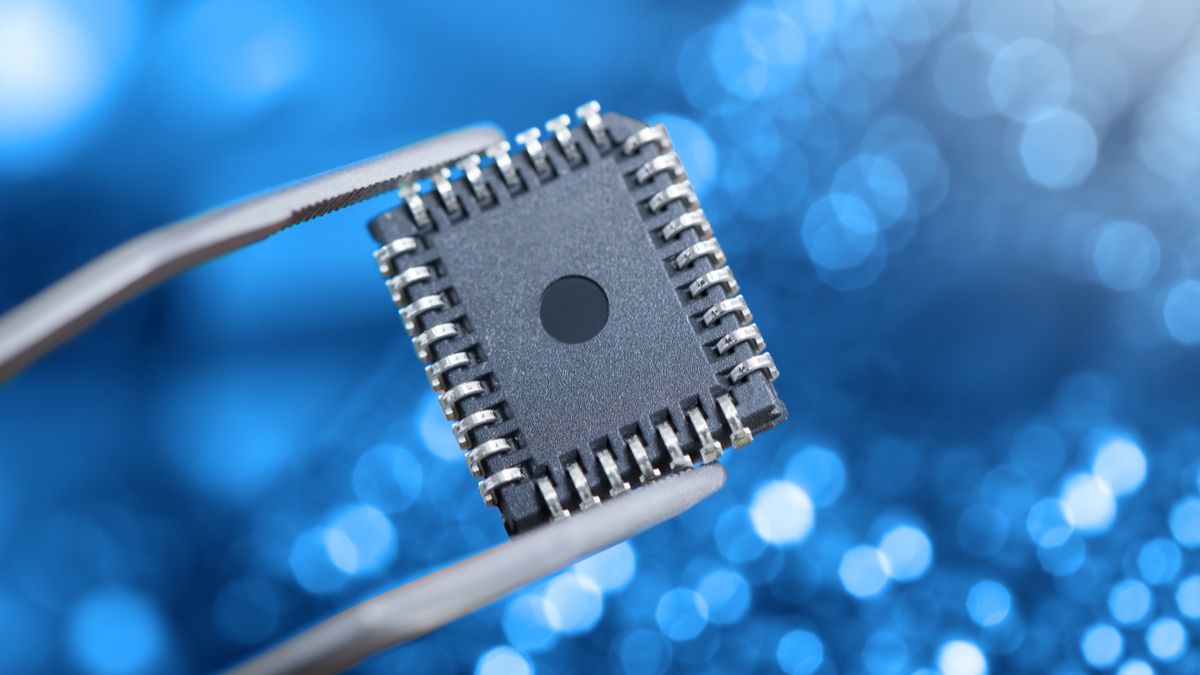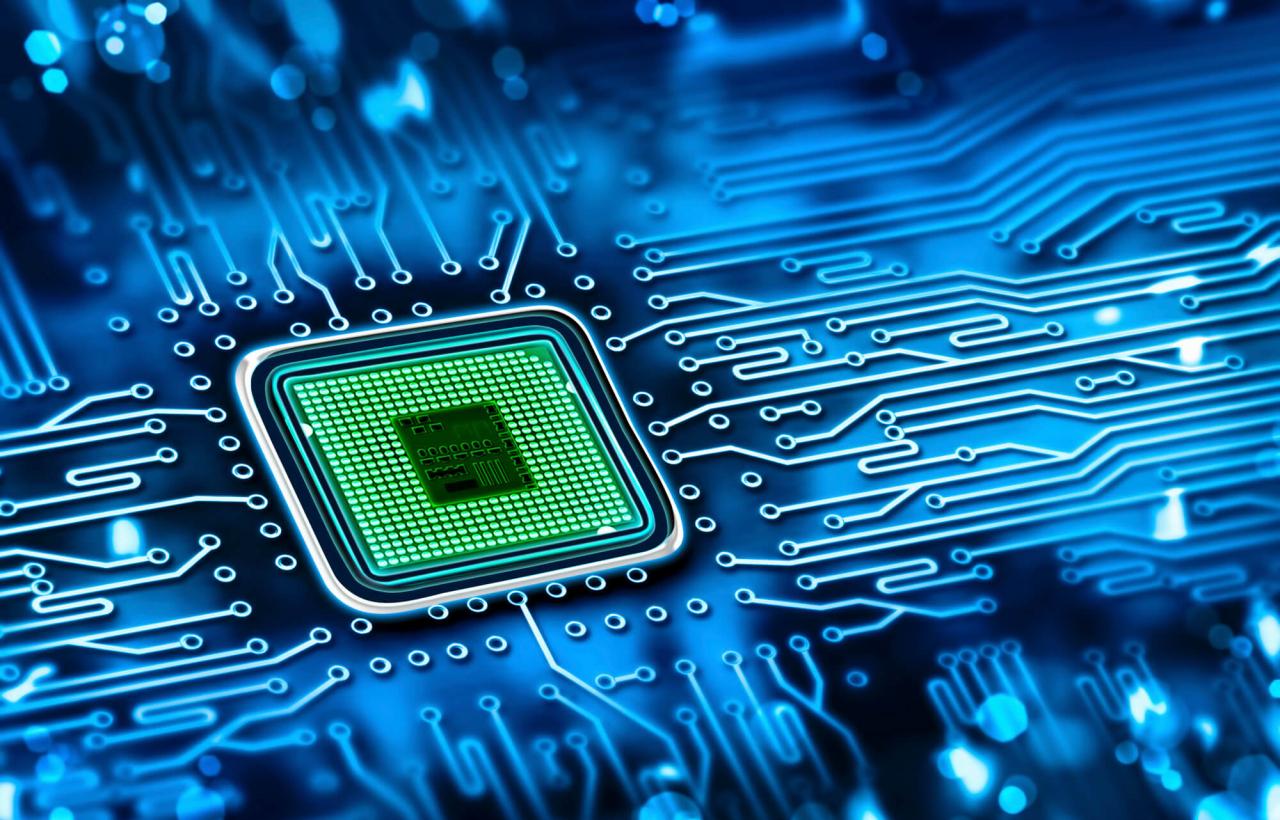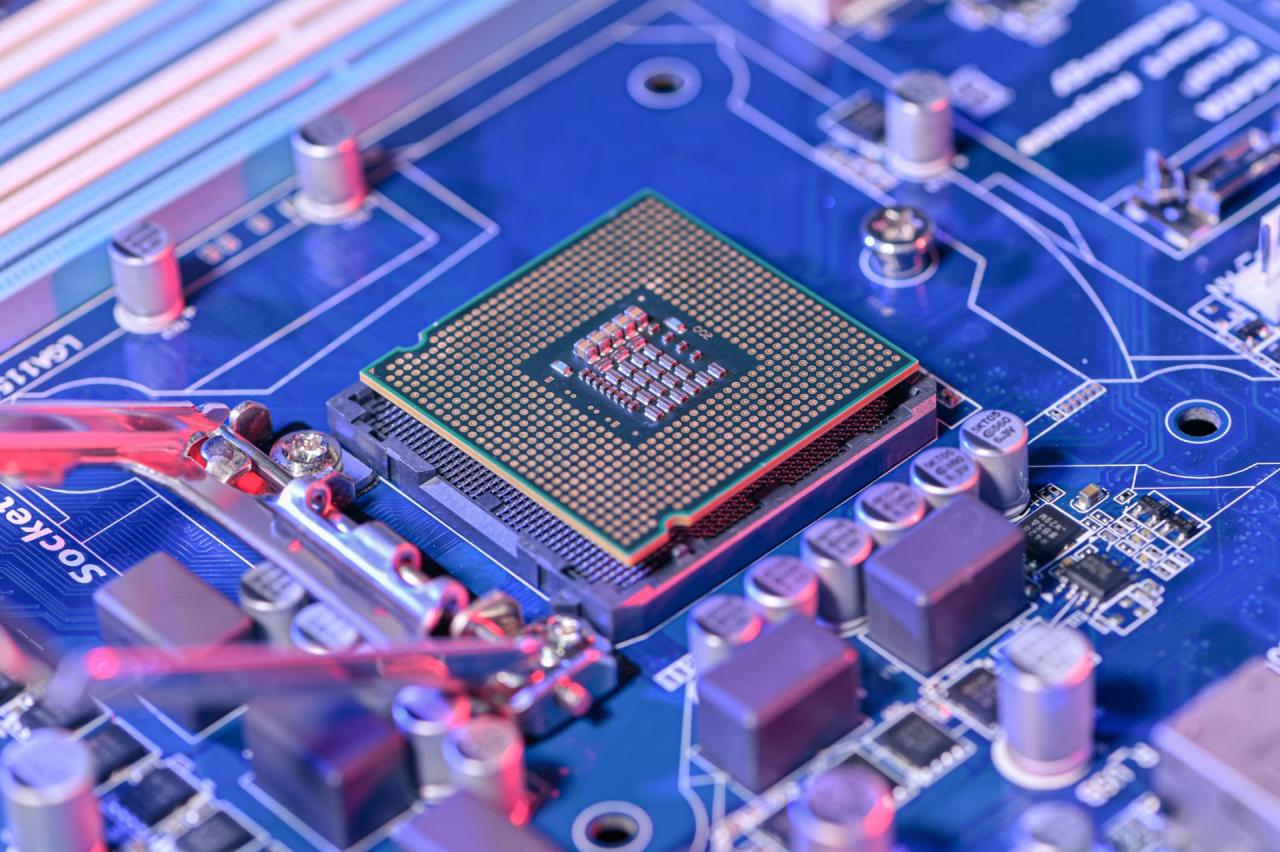Chip iPhone has become a pivotal element in the smartphone landscape, revolutionizing the way we interact with technology. Over the years, Apple has been at the forefront of chip innovation, crafting powerful A-series processors that not only enhance performance but also significantly improve user experience. From seamless multitasking to superior graphics, the evolution of chip technology in iPhones continues to set new standards in the industry.
As we dive deeper into the specifics of iPhone chip technology, we’ll explore how each generation builds on the last, providing insights into performance differences between models and the implications of advancements such as AI and 5G. Understanding these chips is essential to grasp how they influence everything from battery life to device functionality.
Overview of iPhone Chip Technology

The evolution of chip technology within the iPhone lineup has been a remarkable journey, showcasing Apple’s commitment to pushing the boundaries of mobile computing. Since its inception, the iPhone has consistently integrated advanced chip technology to enhance its functionality and user experience. Each new generation of chips not only improves performance but also optimizes energy efficiency, ensuring that users can enjoy a seamless experience throughout the day.
The progression of chip technology in iPhones has been pivotal in determining the performance and capabilities of the devices. Early models utilized simpler processors, but as user demands increased for more complex applications and multitasking capabilities, Apple introduced more sophisticated designs. The A-series chips, starting from the A4 to the latest iterations like the A16 Bionic, have embodied cutting-edge engineering, resulting in significant boosts in processing power, graphics performance, and machine learning capabilities.
Impact of Chip Performance on Overall Device Functionality
The performance of the chip directly correlates with the overall functionality and user experience of the iPhone. Enhanced processing capabilities allow for smoother operation of applications, faster loading times, and improved multitasking. The introduction of specialized cores within the chips enables tasks like image processing and artificial intelligence computations to occur more efficiently.
For instance, the A15 Bionic chip features a 6-core CPU and a 4-core GPU, delivering up to 50% faster graphics performance compared to its predecessor. This advancement allows for high-performance gaming and video editing directly on the device, providing users with the power typically reserved for desktop computers. Moreover, the integration of a dedicated neural engine enhances machine learning tasks, enabling sophisticated features like real-time photo enhancements and voice recognition.
Role of Custom Silicon Design in Enhancing User Experience
Apple’s custom silicon strategy has been instrumental in creating a unique user experience that differentiates the iPhone from competitors. By designing its chips, Apple can tightly integrate hardware and software, optimizing performance while enhancing features tailored specifically for iOS.
The custom design allows for innovations such as the Secure Enclave, which protects sensitive information, and the ability to support advanced computational photography features. For example, the A14 Bionic chip’s 16-core Neural Engine can process 11 trillion operations per second, enabling features like Night mode and Deep Fusion, which significantly enhance photo quality in various conditions.
Additionally, the focus on energy efficiency in chip design ensures that users can enjoy their devices without frequent recharging. With each new chip generation, Apple has minimized power consumption while maximizing performance, striking a balance that keeps users engaged and satisfied with their devices.
“The performance and efficiency of iPhone chips are crafted to enhance every aspect of user interaction, ensuring that technology feels intuitive and effortless.”
Comparison of Different iPhone Chips: Chip Iphone

The evolution of iPhone chips has fundamentally transformed mobile technology, pushing the boundaries of performance, efficiency, and user experience. Each new generation not only enhances processing capabilities but also introduces innovations that set them apart in a competitive landscape dominated by leading chip manufacturers.
The recent A-series chips, including the A14, A15, and the latest A16 Bionic, showcase significant improvements in specifications and performance metrics, making them formidable contenders against rival offerings from companies like Qualcomm and Samsung. Understanding these differences is essential for grasping how Apple’s chip architecture influences overall device performance, particularly in relation to battery life and efficiency.
Specifications and Performance Metrics of Recent A-Series Chips
The A-series chips have consistently set the benchmark for mobile processing power. Below is a comparison of key specifications across the latest models:
| Chip Model | CPU Cores | GPU Cores | Neural Engine Cores | Process Technology |
|---|---|---|---|---|
| A14 Bionic | 6 | 4 | 16 | 5nm |
| A15 Bionic | 6 | 4/5 (depending on model) | 16 | 5nm |
| A16 Bionic | 6 | 5 | 16 | 4nm |
These specifications highlight improvements in processing power, especially in GPU performance, which is vital for graphics-intensive tasks such as gaming and video editing. The transition to a smaller process technology (from 5nm to 4nm) in the A16 Bionic also contributes to enhanced efficiency, allowing for better performance without a proportional increase in power consumption.
Key Differences Between A-Series Chips and Competitors’ Offerings
Apple’s A-series chips stand out not only for their raw power but also for their unique architectural designs that differentiate them from competitors such as Qualcomm’s Snapdragon series and Samsung’s Exynos chips. The following points encapsulate these differences:
-
Unified Memory Architecture (UMA)
allows for faster data access and improved multitasking capabilities compared to traditional models that separate RAM and CPU/GPU processing.
-
Dedicated Neural Engine
in A-series chips specifically enhances machine learning tasks, offering superior capabilities for AI-driven applications.
- High-performance cores in Apple’s chips can be utilized more efficiently, automatically shifting workloads based on task demands, unlike some competitors that may not optimize as effectively.
These architectural efficiencies result in a notable performance edge, particularly in tasks sensitive to latency and execution speed.
Impact of Chip Architecture on Battery Life and Efficiency
The architecture of iPhone chips directly influences both battery life and overall energy efficiency, a critical concern for users. The A-series chips are designed with efficiency cores that manage less demanding tasks, allowing the high-performance cores to stay inactive when full power is unnecessary. This intelligent task management leads to substantial energy savings.
For example, the A15 Bionic chip not only provides faster performance but also optimizes power consumption, contributing to longer battery life in real-world usage. Users have reported increased screen-on time, particularly in demanding applications like gaming and streaming video, where prior models would have drained the battery more rapidly.
Additional innovations such as hardware-accelerated video encoding and decoding also contribute to reduced power usage during these tasks, further enhancing the efficiency of devices running on A-series chips. The integration of these features within Apple’s chip design offers a seamless experience without sacrificing battery longevity.
Future Trends in iPhone Chip Development

As Apple continues to push the boundaries of technology, future iPhone models are set to benefit from significant advancements in chip development. The evolution of chip technology is not solely about improving performance; it also encompasses enhanced efficiency, integration of new technologies, and addressing the specific demands of users in a 5G-driven world. This section delves into anticipated advancements, the implications of 5G on chip design, and the integration of artificial intelligence (AI) in next-generation iPhone chips.
Anticipated Advancements in Chip Technology
The upcoming iPhone chips are expected to incorporate several groundbreaking advancements that will redefine mobile computing. These advancements include improved processing capabilities, enhanced energy efficiency, and support for emerging technologies. Notable trends to watch include:
- Smaller Process Nodes: The shift towards smaller process nodes, such as 3nm technology, promises to deliver more transistors on a chip, resulting in better performance and lower power consumption.
- Improved Heat Management: Future chips will likely include advanced thermal management solutions, enabling devices to maintain optimal performance without overheating, crucial for prolonged usage.
- Increased Integration: The trend of integrating multiple functionalities, such as CPU, GPU, and neural engines on a single chip, is expected to continue, reducing the need for additional components and enhancing overall system efficiency.
Implications of 5G Technology on Chip Design
The rollout of 5G technology represents a significant milestone in mobile communication, and it will profoundly influence chip design for future iPhones. As 5G networks become more widespread, chip manufacturers will need to adapt their designs to accommodate higher data speeds and lower latency. Key implications include:
- Enhanced Modem Integration: Future iPhone chips will likely feature more sophisticated built-in modems to support 5G, allowing for seamless connectivity and improved network performance.
- Power Efficiency in 5G Tasks: Chips will be optimized to manage the demands of 5G, ensuring that heavy data tasks do not drain battery life excessively through efficient power management techniques.
- Support for Advanced Features: The capacity to leverage 5G for real-time applications will necessitate chips that can handle advanced features such as augmented reality (AR) and ultra-high-definition video streaming.
Predictions on AI Integration within Next-Generation iPhone Chips
Artificial intelligence is rapidly becoming a cornerstone of mobile technology, and future iPhone chips are expected to further embrace AI capabilities. The integration of AI within chip architecture promises to enhance user experiences through smarter device interactions. Key predictions include:
- On-Device Machine Learning: Next-generation iPhone chips are anticipated to empower sophisticated on-device machine learning capabilities, allowing for faster processing of tasks such as image recognition and voice commands without relying on cloud services.
- Personalized User Experiences: AI will enable chips to learn user preferences and behaviors, allowing for a more tailored experience, such as optimized battery usage and customized app functionalities.
- Enhanced Security Features: AI-driven chips will bolster security measures, using advanced algorithms for facial recognition and data protection, ensuring user privacy and device integrity.
Troubleshooting Common Chip-Related Issues
The intricate design and functioning of iPhone chips can sometimes lead to various issues that may affect the overall performance of the device. Understanding these common chip-related problems is essential for efficient troubleshooting and resolution. This section will delve into the typical symptoms associated with chip malfunctions, methods of diagnosing these issues, and practical solutions to mitigate the problems effectively.
Common Symptoms of Chip Malfunctions
Identifying the specific symptoms associated with chip-related issues can significantly aid in diagnosing the problem. Common indicators include:
- Device Overheating: Excessive heat during regular use can suggest chip failures.
- Frequent Crashes: Unexpected system crashes or app failures may indicate issues with the chip’s processing capabilities.
- Poor Battery Life: An unusual decrease in battery performance can be linked to faulty chip configurations.
- Touchscreen Responsiveness: Lagging or unresponsive screen behavior may stem from chip malfunctions affecting input processing.
- Connectivity Problems: Issues with Wi-Fi, Bluetooth, or cellular connections can relate to chip problems in communication processing.
Methods for Diagnosing Chip-Related Problems, Chip iphone
Accurately diagnosing chip-related problems in iPhones involves systematic troubleshooting techniques. Key methods include:
- Software Updates: Ensure the device’s operating system is up to date, as updates may resolve existing issues caused by software bugs.
- Resetting the Device: Performing a factory reset can help identify whether the issue lies within software or hardware.
- Diagnostic Tools: Utilizing built-in diagnostic tools or third-party applications can provide insights into chip performance and functionality.
- Component Testing: For more technical users, running tests on individual components can isolate chip performance issues.
- Checking for Physical Damage: Inspecting the device for physical damage that may affect chip performance is crucial.
Solutions and Workarounds for Chip Malfunctions
Once chip-related issues have been diagnosed, implementing appropriate solutions or workarounds is essential for restoring device functionality. Effective strategies include:
- Professional Repair Services: Seeking assistance from certified technicians can ensure that chip replacements or repairs are conducted correctly.
- Software Restoration: Reinstalling the device’s operating system may resolve software-induced chip issues.
- Battery Replacement: If poor battery life is linked to chip problems, replacing the battery may improve performance.
- Cooling Solutions: For overheating devices, using cooling pads or ensuring proper ventilation can help manage heat.
- Temporary Workarounds: Limiting resource-intensive applications can alleviate stress on the chip, providing a temporary fix until a permanent solution is found.
“A proactive approach to addressing chip-related issues can significantly extend the lifespan and performance of your iPhone.”
Query Resolution
What is the role of custom silicon in iPhones?
Custom silicon allows Apple to optimize performance and efficiency, providing a unique user experience tailored to their devices.
How do iPhone chips compare to competitors?
iPhone chips typically outperform many competitors in benchmarking tests due to Apple’s focus on integration and optimization.
What common issues arise with iPhone chips?
Common issues include overheating, battery drain, and performance lags that may indicate chip malfunctions.
Can I upgrade my iPhone chip?
No, iPhone chips are integrated into the device and cannot be upgraded; upgrading usually involves purchasing a new model.
How does 5G impact iPhone chip design?
5G requires advanced chip designs to handle increased data speeds and connectivity, influencing future iPhone architecture.
The Samsung S 10 stands out with its impressive camera capabilities and sleek design, making it a desirable choice for tech enthusiasts. Users have praised its vibrant display and powerful performance, which elevate the overall smartphone experience. Whether you are capturing moments or enjoying your favorite media, the S 10 delivers a remarkable experience that keeps you connected.
On the other hand, the Samsung S 9 Plus continues to impress with its dual-camera setup and excellent battery life. Many fans appreciate its solid build and smooth functionality, which enhance everyday usability. This device remains a strong contender in the smartphone market, showcasing features that cater to both casual users and professionals alike.